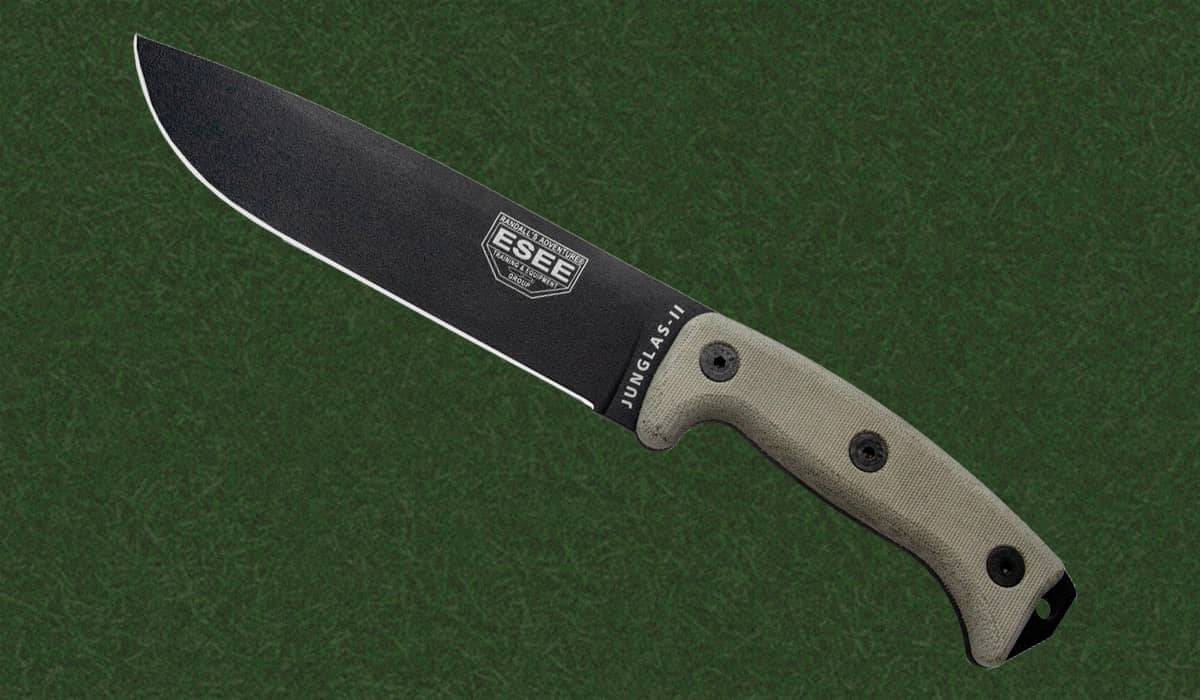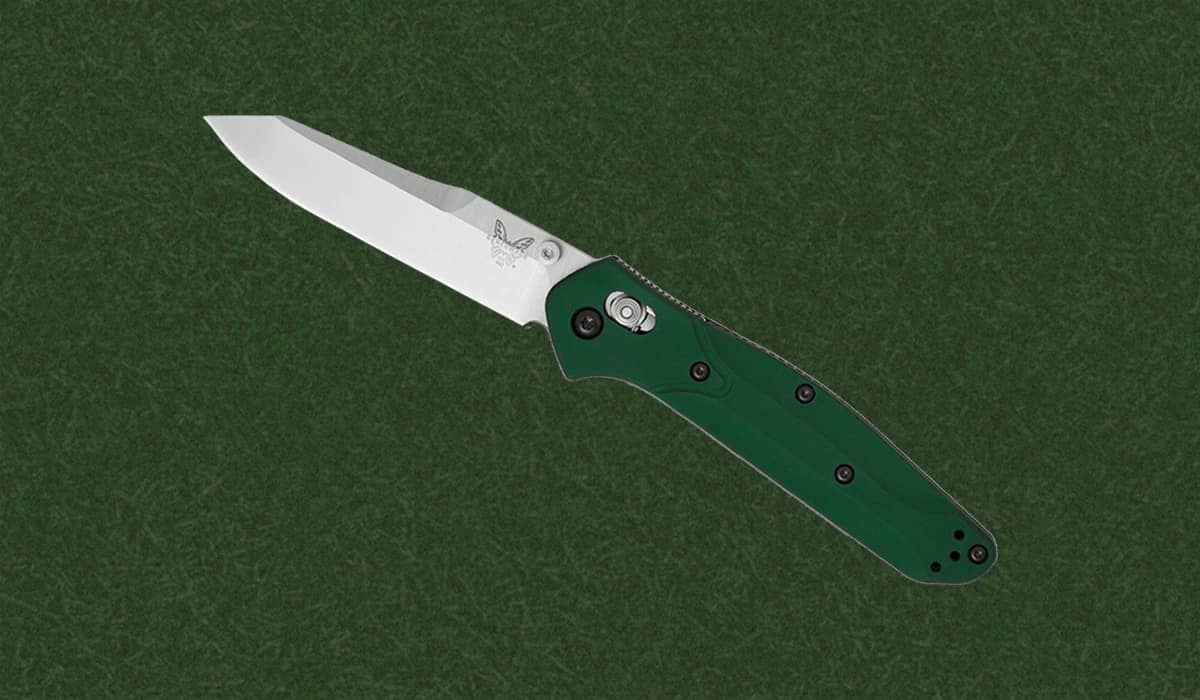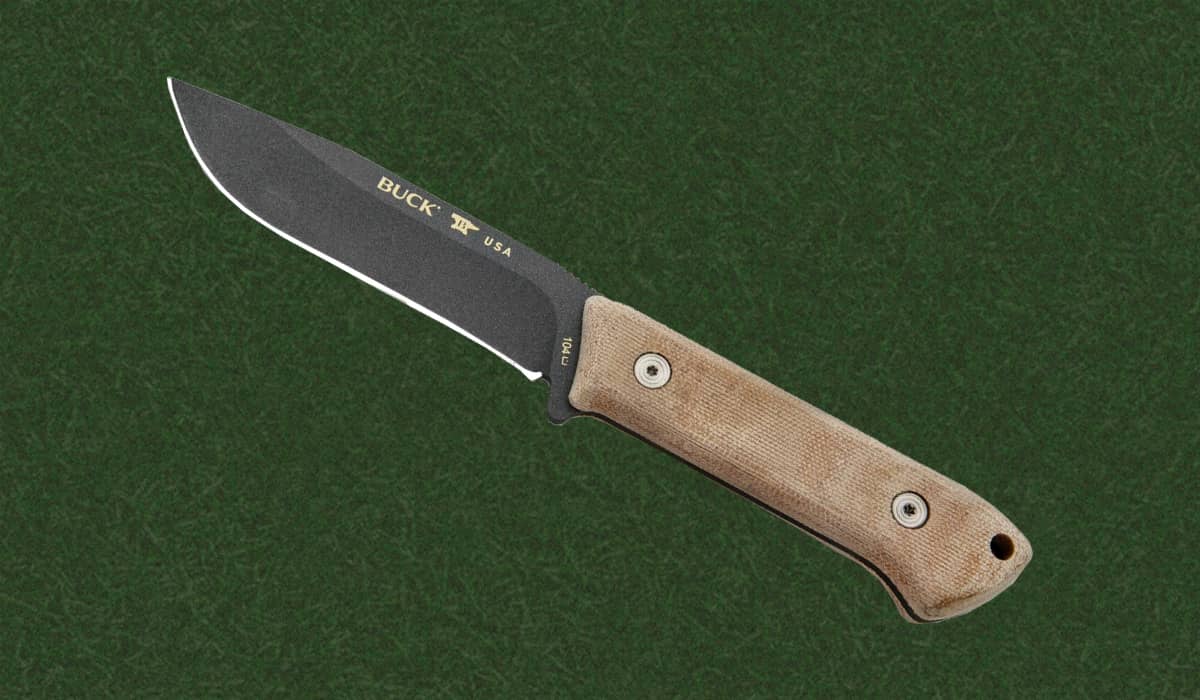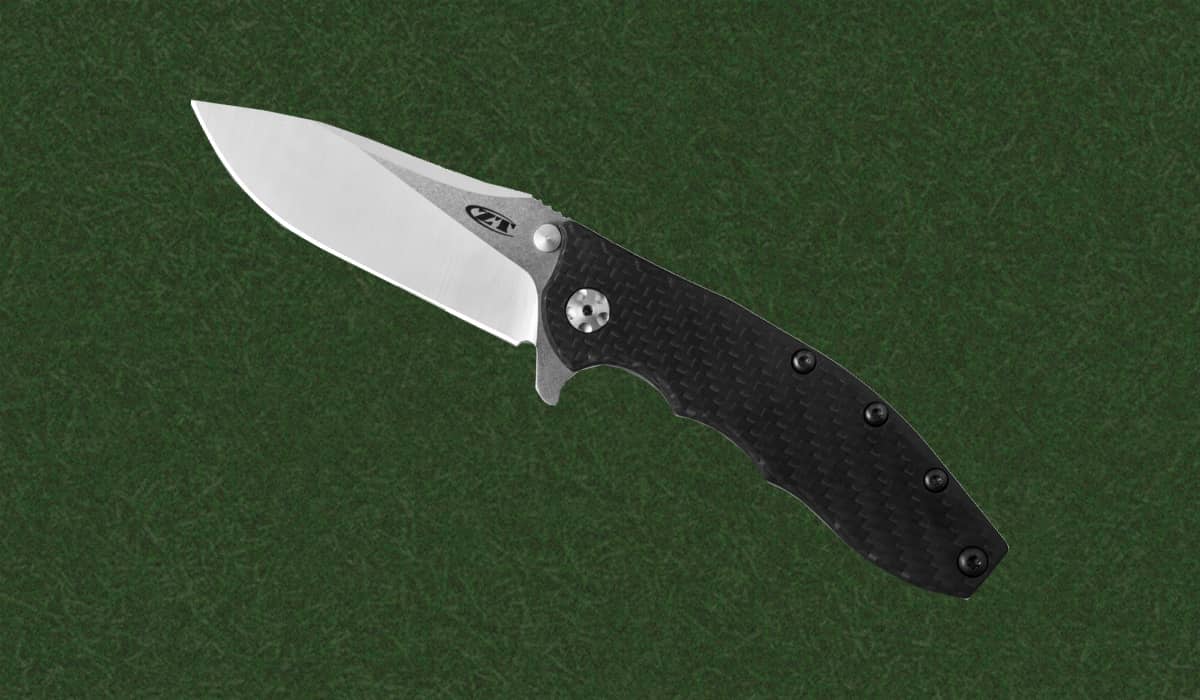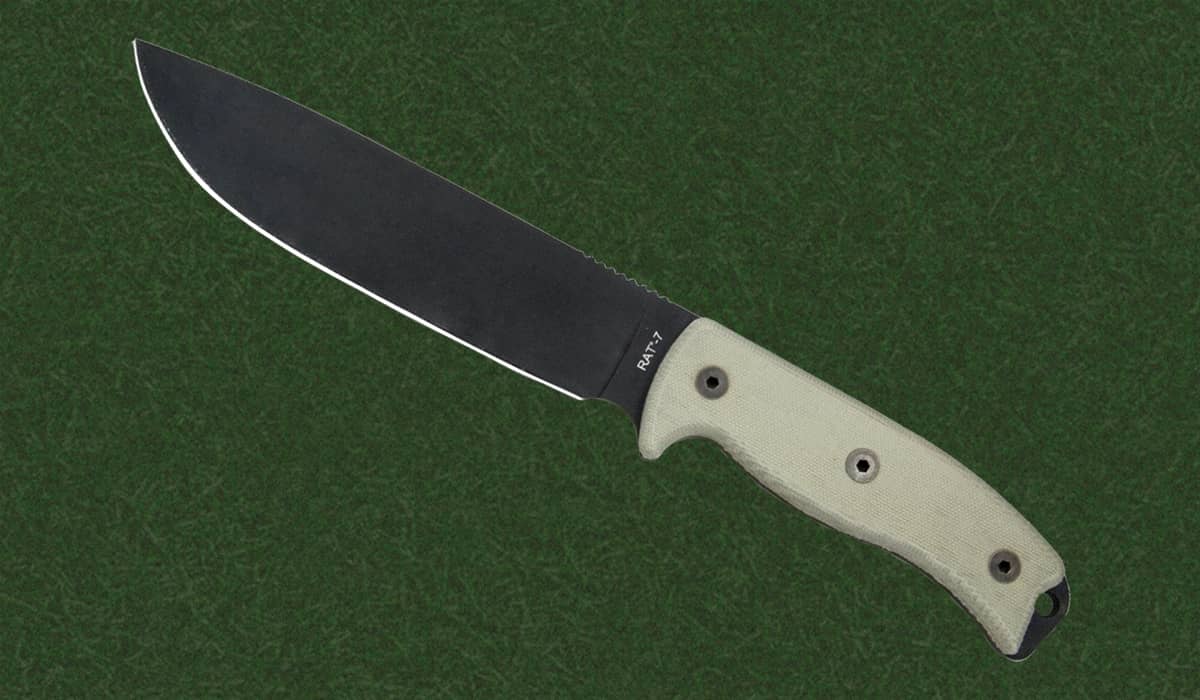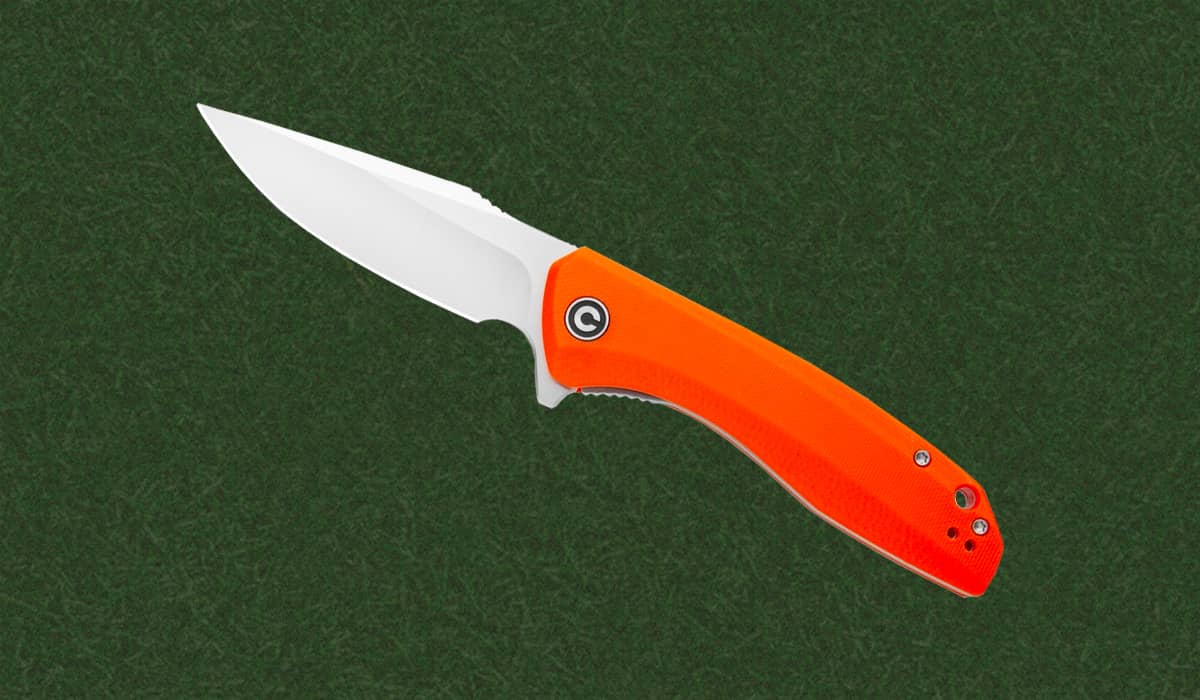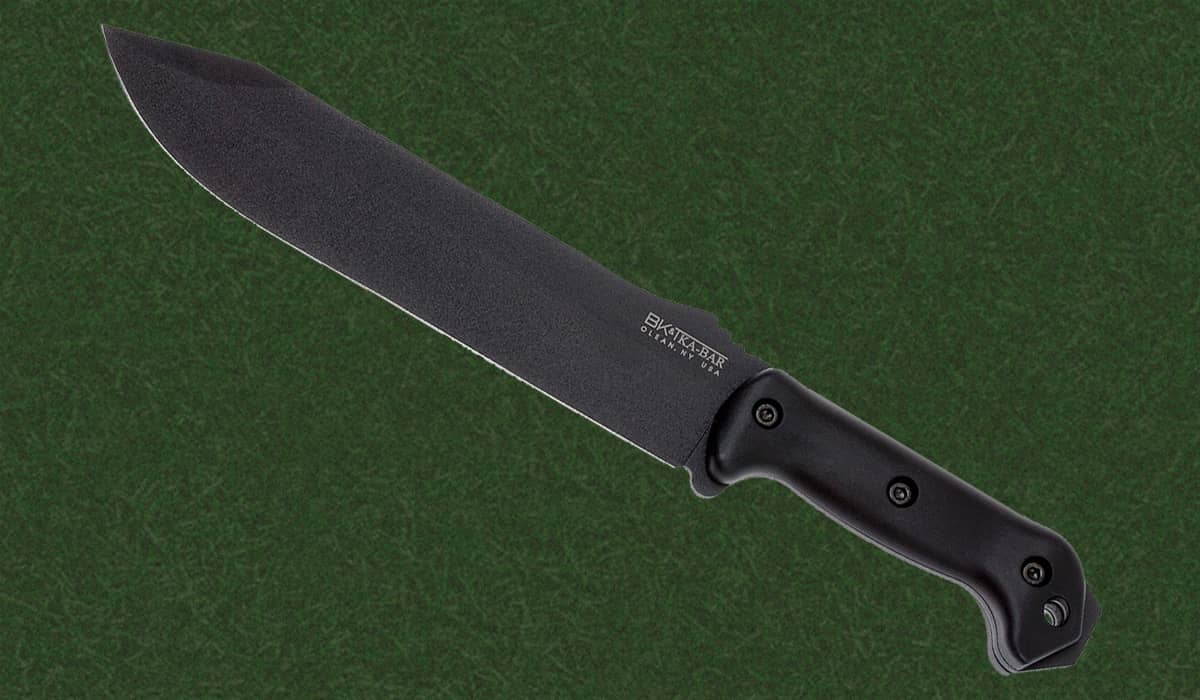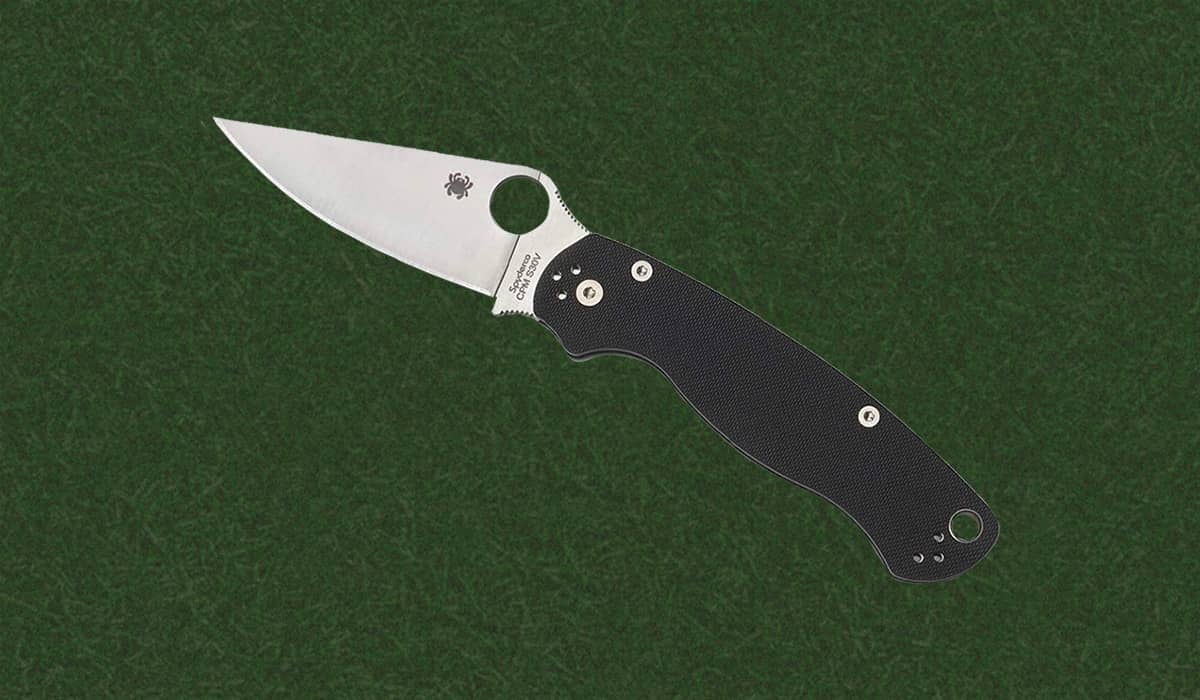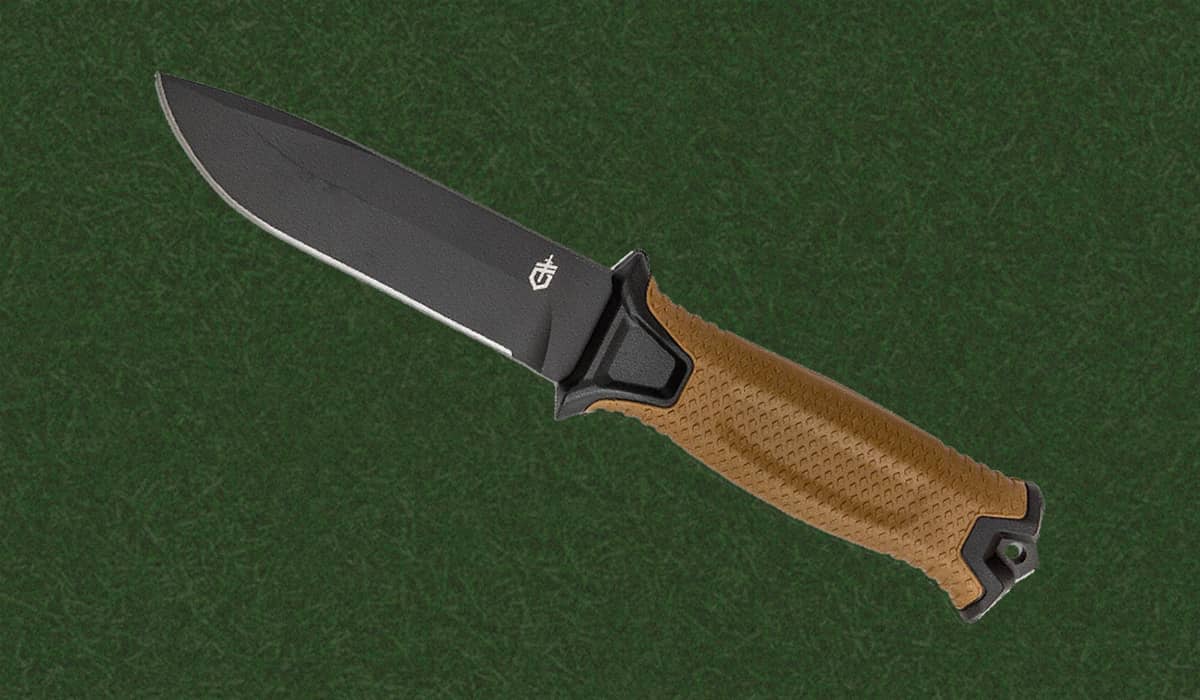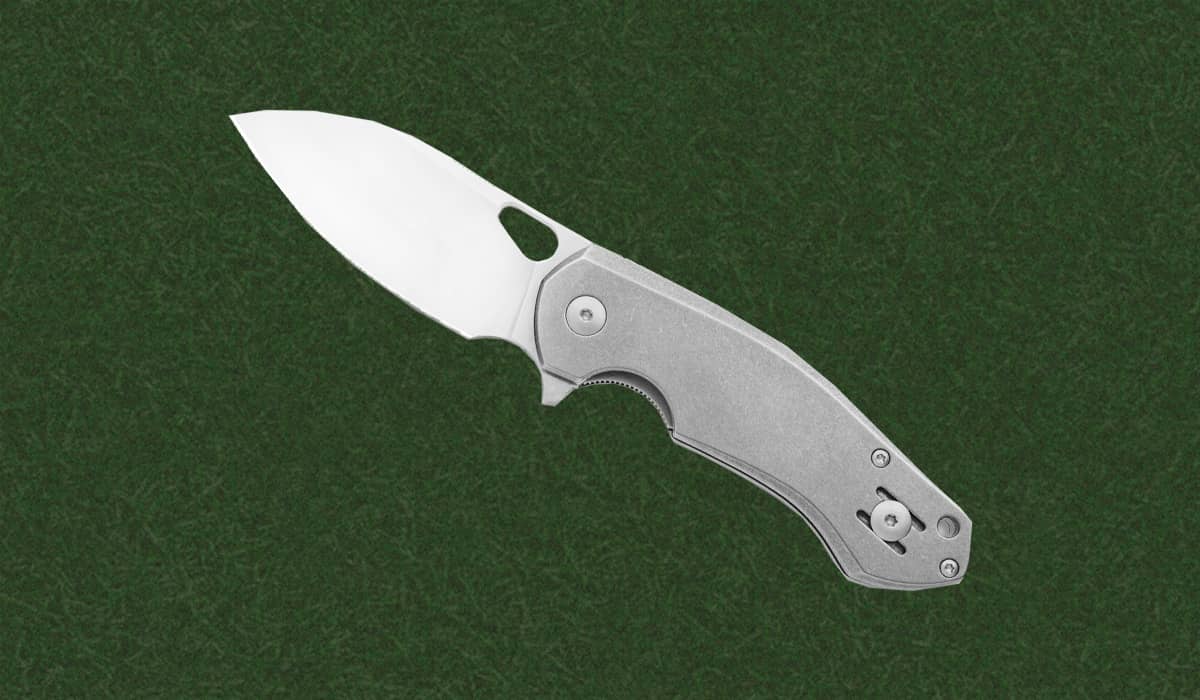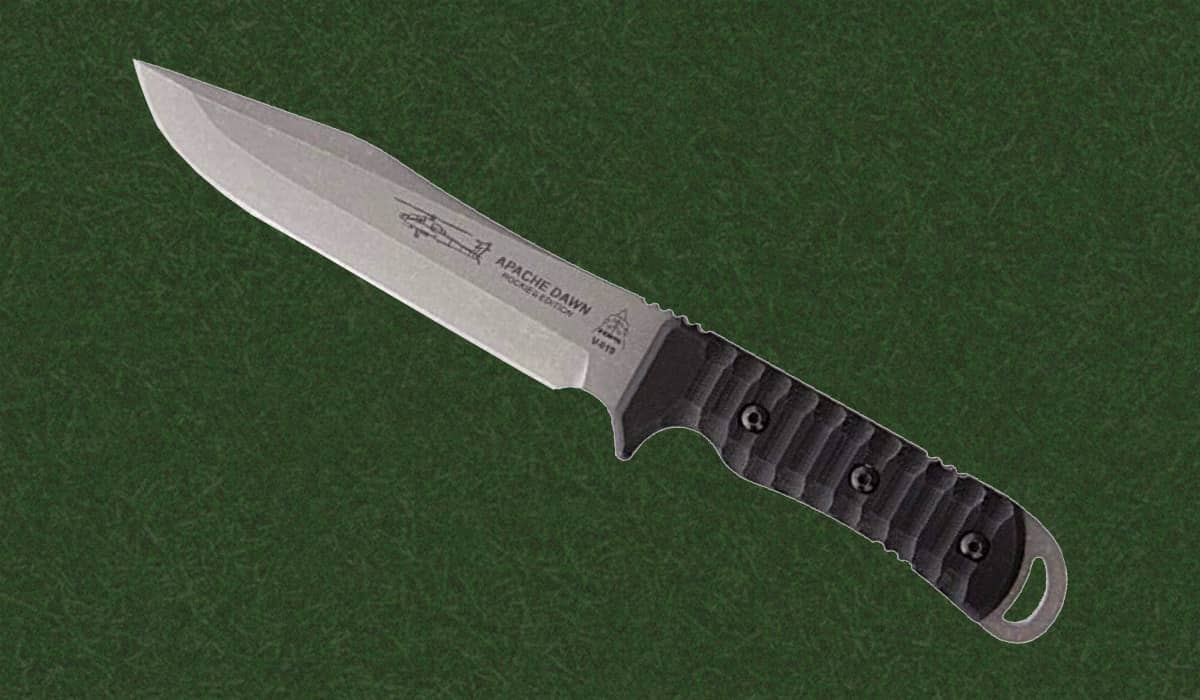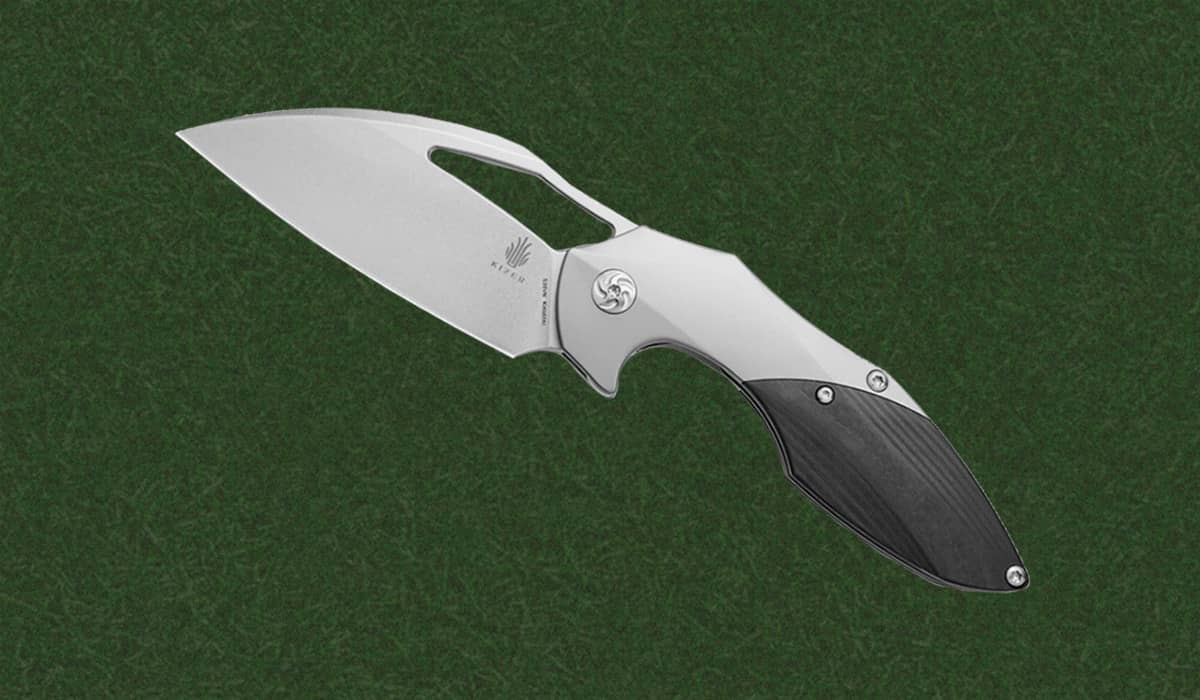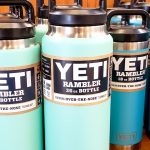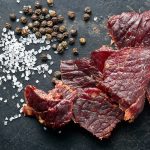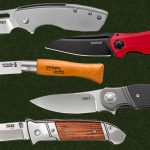Best Camping Knives—Going Fixed Versus Folding
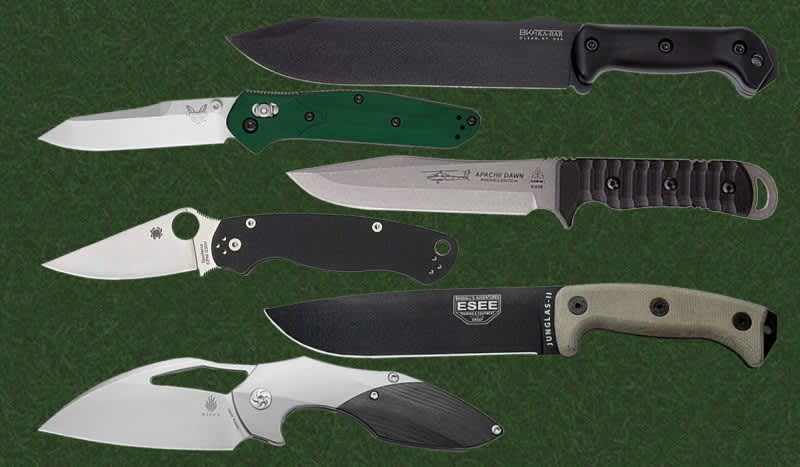
1. FIXED — ESEE Junglas II Survival 8.5"
The ESSEE Junglas II is two inches shorter than the original Junglas, and with its 8.5-inch blade, it dances the line between mini machete and camp knife perfectly. It features a high flat grind, and a fairly thick 0.188-inch blade thickness, made of 1095 steel. The use of Micarta for its handle help lighten the weight load slightly, but this thing is by no means a lightweight.
2. FOLDING — Benchmade Osborne 940
For years Benchmade was the one to beat in a number of categories, and even though they face stiffer competition than ever, the Osborne 940 is still viewed by many as a must have. Aluminum scales, a slim profile, and the brand’s patented Axis lock system are all part of the package. The Osborne is fitted with a 3.4-inch satin finished reverse Tanto blade, made of CPM-S30V steel.
3. FIXED — Buck Compadre Camp Knife 4.5"
Much more compact than the ESSEE option, the Buck Compadre is still a reasonable size for medium duty work when camping. It features full tang construction, and is made of 5160 steel and a Cerakote coated blade. This heavy duty coating will further help protect the blade from rusting if it’s left out in damp conditions. Its contoured Micarta scales are a nice upgrade in the grip department as well.
4. FOLDING — Zero Tolerance 0562CF Hinderer Knife
Zero Tolerance’s track record is quite similar to that of Benchmade, and though some of their knives can see a little too “Tacti-Cool”, the 0562CF Hinderer remains one of the best in their catalog. The name Hinderer likely rings a bell for some of you, as Rick Hinderer is one of the bigger names in knife design. He has since spun off and offers a broad selection of knives under his own brand (manufactured in his own facility in Ohio), but a number of years back he designed the 0562 for Zero Tolerance with his signature blade profile. It’s a clever execution, as you get a very thin and slicey profile at the tip, and more of a wedge as you work back towards the handles.
5. FIXED — Ontario RAT-7 Fixed Blade Knife 7"
Just a touch smaller than the ESSEE Junglas II, the RAT-7 from Ontario Knife Company is a big beast of a blade with a full flat grind and drop point profile. These big RATs have been a go-to for the camping and survival scene for a good while, and deliver great value for a sub-$100 price point. With 1095 steel it’s relatively durable, is less prone to chipping, and is easy to sharpen as needed.
6. FOLDING — Civivi Backlash G10 Linerlock Knife
While we’re talking budget buys, the Civivi Backlash gets our vote as far as a good sized folding camping knife that isn’t too pricey. Basic linerlock construction, G-10 scales (orange, or plenty of other colors), a ball-bearing pivot, and good ergonomics all tip the scales in the sub-$50 folder’s favor. Manufactured in China to keep costs down, Civivi has consistently proven that it’s able to build to a more than adequate specification for very little money.
7. FIXED — Ka-Bar Becker Combat Bowie 9"
Back to another “big boy”, so to speak, the 9-inch Ka-Bar Becker Combat Bowie is a monster of a knife that can be just as effective on a campsite as any short-handle hatchet. At this size, you’ll need a backup folder as previously suggested, which will be helpful where more detailed cutting and slicing is required. All told, Ka-Bar rounds out the top three in the bush/camp/survival knife category, and the Becker’s 1095 Cro-Van steel full tang construction make it a solid contender against the Ontario RAT-7 and ESSEE Junglas II we previously mentioned. For the most part it’ll come down to size and brand preference more than anything.
8. FOLDING — Spyderco Para Military 2
The same way that ESSEE, Ontario, and K-Bar dominate the fixed blades, the Spyderco Para Military 2 is the benchmark against which countless midrange folding knives are measured. The Para 2 comes with a durable 3.42-inch blade made of CPM S30V steel, and features Spyderco’s compression lock system, which is notably more sturdy than the linerlocks found in many affordable folding knives out there. You’ll note the large round hole cutout in the blade, which will seem odd to those less familiar with folding knives. This is the brand’s longstanding answer to a thumbstud or flipper tab deployment, allowing for an easy roll or flip open of the blade with a single hand.
9. FIXED — Gerber StrongArm 4.8"
A bit more compact and lighter on the pocketbook, we’re not getting into a bit of a more light duty option for when your surroundings aren’t expected to be quite as wild or unruly. Key highlights include its diamond patterned rubberized grip, and modular sheath system that allows for a wide range of carry positions. At 4.8 inches long, this knife will also be perfectly fine for meal prep and other tasks that the big Ka-Bar and ESSEE blades can’t handle.
10. FOLDING — GiantMouse ACE Biblio Titanium
Also a lighter duty option on the folding side as it comes in with a 2.875-inch blade, the GiantMouse ACE Biblio in titanium is still a welcome addition to this list. Off the top of this list we mentioned that we were avoiding smaller EDC knives, but if you’ve got a 6-inch or larger fixed camping knife along for the ride, the slicey full flat grind of the Biblio combined with its comfortable grip design make it a solid handy tool for meal prep or other tasks around the campsite once you’re starting to settle in.
11. FIXED — TOPS Knives Apache Dawn 6.75"
The TOPS Knives Apache Dawn lands in the midrange as far as length goes, but at 0.24 inches thick, its one of the more wedge-like blades in this list for those with batoning on the brain. It’s a full-tang design, once again, so there’s no concern about it surviving a good whack as you split and prep firewood for your camp. Similar to the Gerber, its sheath allows for a range of carry options as well.
12. FOLDING — Kizer Isham Megatherium
Because the meal prep topic came up, this beastly folder immediately sprang to mind. The Megatherium is an older design by the clever yet eclectic mind of Elijah Isham. Its broad 3.6 inch wharncliffe blade hangs well below grip point, making it perfect for chopping and slicing on a flat surface, which can’t be said for a lot of camping knives out there. It’s big, it’s weird, its made of quality S35VN steel, and it’s a solid way to close out this list.
Fixed Versus Folding—What Works When
This is really the meat ‘n potatoes of the dialogue here; when can you get by on a camping trip with a folding knife, and when is a fixed blade the only way to go? As we said above, the big questions come down to where you’re going, how long you’re out, and how much you’re packing and willing to carry. If the terrain isn’t too rough to get to destination, then you can pack a bit of everything, including a hatchet, a moderately sized bush knife, and then a folder for more detailed work and/or potential meal prep. If you’re looking at a serious multi-day hike where weight load is a consideration then matters are a fair bit different. Can you justify the weight of a hatchet in your pack? Given the option, I’d rather not. Whether or not the climate requires firewood is yet another piece of the puzzle. If you’ve got a compact camp stove coming along for the ride and can due without an open bonfire, then you’re in even better shape.
This brings us to the VERY touchy subject of batoning firewood. Some swear by it. Some loathe the concept. One thing we can all agree on is that you should never baton using a folding knife of any sorts. It “can” be done. It shouldn’t, and because we’re talking about a camping scenario and not an emergency survival scenario, we’ll leave it at that. We’re of the view that batoning is not an effective test of knife quality, nor is it an essential or useful task depending on where you are and what sort of wood you have access to. Moral of the story is, if it’s going to be your most useful way of splitting down wood to build a fire (should proper kindling/starter/twigs/dry brush not be available), you’ll need the right knife to do it; a good 5-inch or larger fixed blade with a thicker blade stock will do the trick. Between the batoning option for firewood, brush clearing, and other tasks, this is where a moderately sized fixed blade is king if you’re looking at a one-and-done knife for your camping trip.
What To Look for in a Fixed Blade
To a degree, there’s still some variability here. You want something big enough and tough enough to hack and chop your way through things if and when needed, but not so big that it’s cumbersome to use for anything else. As far as blade shapes go, a drop point, clip point, or spear point are fine options. For blade grinds, there are a few options. A full flat grind can make for a better slicer, whereas a thicker flat or hollow grind that only rises up half of the blade will be more efficient for any sort of hacking or splitting that needs to happen. In terms of steel selection, you don’t need to be especially picky here, in that you want something with decent edge retention, but not too hard that chipping can be a concern. Corrosion resistance is also a consideration, but the reality of the matter is that a lot of fixed bush knives out there are using 1095 or 1095 Cro-Van steel, so you’ll be best served making sure your blade is kept cleaned and sheathed when not in use. Full tang construction is often preferred when it comes to a tough tool like what’s required here, but it’s not an absolute must. Sadly the whole “batoning as a test of knife quality” nonsense has made many believe that the knife world has to be full tang or bust, but that’s simply not the case. If your knife doubles as a splitter, sure. If you’re not going to use it that way, this argument is irrelevant.
What To Look for in a Folding Camping Knife
No matter the circumstance, your folder when camping is your backup knife. You’re already packing a bigger bush/camp fixed blade, and you want to have something smaller on hand for more minor/dextrous work—cutting rope, prepping food, and maybe even sharpening sticks for marshmallow roasting if you’re camping with family. Because it won’t be your main tool, you can almost get away with a more compact/EDC style folding knife, but you’re still going to want something with a good sized blade on it (no less than 3.5 inches or so), and something that can take a beating. In our selections we’ve split between more lightweight medium-duty options, and some more hardcore/overbuilt units for good measure.
We are committed to finding, researching, and recommending the best products. We earn commissions from purchases you make using the retail links in our product reviews. Learn more about how this works.

